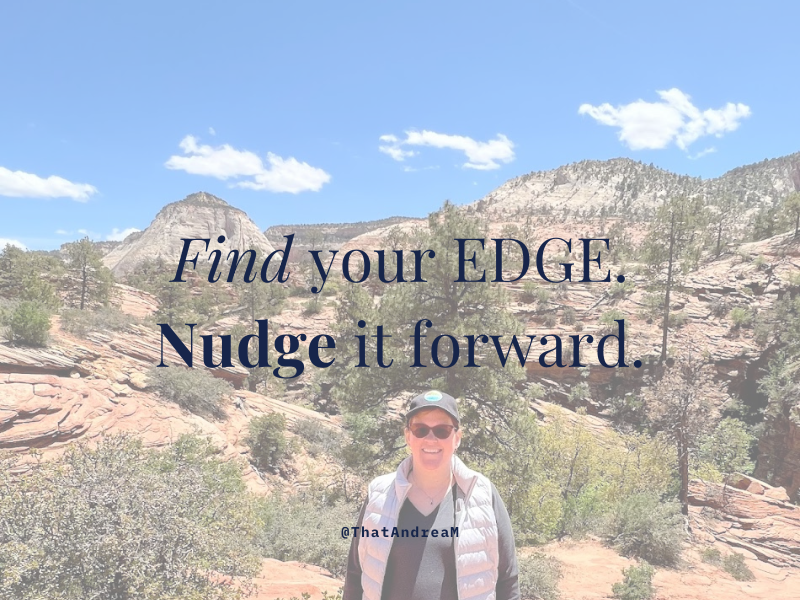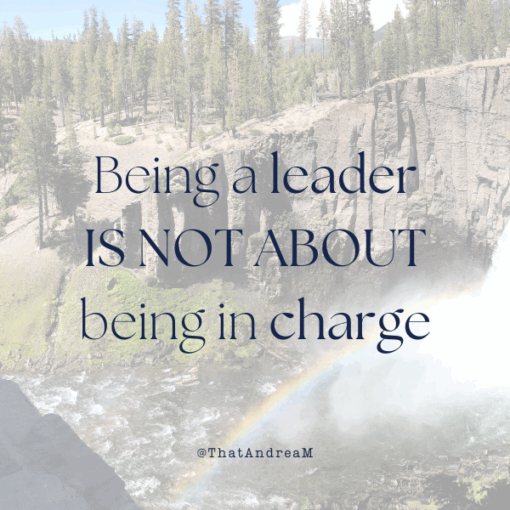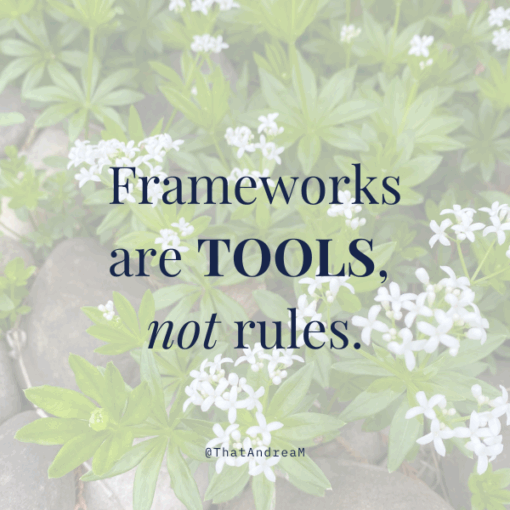They told me I’d be fine in 72 hours. It took 3 years.
Two prescription pills triggered a brain injury that turned my world sideways.
Doctors called it a rare side effect.
They said the symptoms would fade once the drugs were out of my system.
They were wrong.
Progress during my recovery came unpredictably: one skill returning as another slipped away.
While some of my symptoms improved (like my ability to speak), others worsened (like my balance or being able to walk across a room).
It reminded me of how babies develop: one skill at a time, never all at once.
The standard “get 1% better every day” advice didn’t apply, and the gap between what I could do and what I wanted to do was excruciating.
That experience completely reshaped how I think about progress, especially in leadership, where we often expect growth to look linear, fast, and easy to measure.
What I learned is that progress isn’t something you see every day. It’s something you realize when you look back.
And sometimes improvement in one area leads to a decline in another.
The key is to keep pushing forward anyway.
Even when the road ahead isn’t clear.
I practice yoga as a part of my overall health, both for relaxation and strength.
But when I started, my balance was shaky.
Standing in a class full of people who didn’t struggle to stay upright and didn’t know my backstory made me feel self-conscious.
But class after class, I showed up and simply tried.
Throughout my recovery, my mantra was:
Find the edge of what I can do, and nudge it forward.
Each day, progress seemed invisible.
But when I looked back, I could see how the impossible quietly became within reach.
This morning, as I struggled to hold a more advanced pose, I saw someone in front of me wobbling.
I smiled, silently sending them some good vibes, hoping that they would keep with it long enough to see their own transformation.
That moment reminded me: progress at work is no different.
We pressure ourselves, and our teams, to transform fast.
To prove progress weekly.
To show results before the system is ready.
But lasting change often looks like my recovery: experimental, uneven, and frustratingly slow.
Sometimes fast action is necessary and appropriate.
For example, if you’ve been dependent on a vendor who simply does not deliver what you need.
But often, lasting change needs to be coupled with a patient, step-by-step, experimental approach.
My recovery taught me what I now see in breakthrough leaders: the ability to move forward without perfect information.
I couldn’t wait for certainty about whether my balance would improve before showing up to yoga class.
The act of showing up was how my balance returned.
I had to build a systematic experimentation practice: find the edge, nudge forward, measure progress over weeks and months rather than daily.
In a work context, the hardest part isn’t the experimentation itself.
It’s maintaining stakeholder confidence when progress isn’t yet visible.
During my recovery, well-meaning people would ask, “Are you better yet?” after each doctor’s visit.
The daily answer was often “no” or “it’s complicated.”
But eventually, the answer was clearly “yes.”
Leaders face this same challenge.
Your executive team wants to know if the new product direction is working.
Your board wants proof that the transformation is on track.
But breakthrough innovation doesn’t show linear weekly progress.
What breakthrough leaders do differently:
🔹 They set expectations for the right time horizon from the start.
“We’ll know if this direction is working in 90 days, not 2 weeks.”
🔹 They share learning, not just results.
“Here’s what we validated this sprint” beats “here’s what we shipped.”
🔹 They make the invisible visible.
Track experiment velocity, assumptions tested, and learning quality, not just feature delivery.
When you frame progress as systematic learning rather than perfect execution, you create space for the experimentation that leads to breakthrough results.
For example:
Imagine a product team shipping reliably every 2 weeks. Yet everyone feels like nothing important is getting done.
The executive team asks, “What’s the impact?” and the product leader doesn’t have a good answer.
When I see this situation, here’s what I recommend:
Address the underlying problem.
Typically, these teams are focused on output (features shipped) instead of learning (assumptions validated).
So, instead of planning 6 features for the quarter, identify the 3 assumptions that, if true, would move a core business metric.
For instance:
- Assumption 1: Enterprise customers will pay 2x more for advanced analytics
- Assumption 2: Current users will engage daily if we add collaboration features
- Assumption 3: We’re losing deals because our onboarding takes too long
Then run focused experiments to test each one: not full feature builds, but minimum tests.
After 6 weeks of focused experiments, you’d learn things like:
- Assumption 1: Validated: 8 of 10 target customers said yes at the higher price
- Assumption 2: Invalidated: collaboration features didn’t substantially increase daily usage
- Assumption 3: Partially true: onboarding time wasn’t the issue, but lack of live support during onboarding was
You may ship less.
But you’ll finally ship what matters.
And even better, trust with stakeholders grows because progress is visible.
They stop asking, “Why isn’t anything moving?” and instead become part of the systematic learning driving toward the right solution, not just busy work.
The mistake most leaders make:
They treat experimentation as a nice-to-have that happens after they’ve gathered enough data to feel confident.
But breakthrough opportunities don’t wait for confidence.
Expect certainty to arrive after the learning, not before it.
Just as I couldn’t wait until my balance was “good enough” to start yoga, the yoga practice WAS how my balance improved.
You can’t wait for certainty before experimenting.
Experiments don’t require certainty. They create it.
So instead of asking, “Do we know enough to move forward?”
Ask, “What’s the fastest way to know?”
Your challenge this week:
Identify one decision you’ve delayed because you “need more data.”
Then ask yourself:
- What assumption am I making that I could test?
- What’s the smallest experiment that could prove or disprove it?
- What could I learn in 2 weeks that I won’t learn from another month of analysis?
Then run that experiment.
You don’t need perfect information.
You need systematic learning.
Find the edge of what you know, and nudge it forward.
Key Takeaways
✅ Progress reveals itself when you look back, not when you look forward.
Meaningful change happens through consistent experimentation. Trust the process even when daily progress feels invisible.
✅ The fastest way to certainty is through experiments, not analysis.
Identify your core assumptions, test them with minimum viable experiments, and let market feedback create the certainty you’re seeking.
✅ Build stakeholder confidence through learning velocity, not feature velocity.
Share assumptions tested and insights gained.
When stakeholders see systematic learning driving decisions, they stop asking “why isn’t anything moving?”
Breakthrough leaders don’t wait for perfect information.
They build systematic learning practices that create competitive advantages while others are still planning.
The road ahead won’t always be clear.
But if you keep nudging forward, you’ll look back and realize the impossible quietly became within reach.





